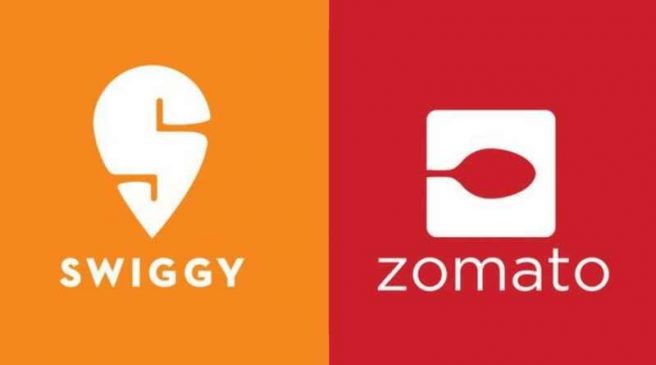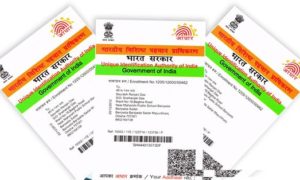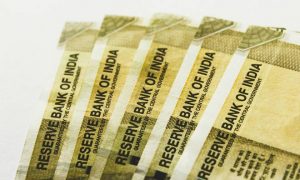Food delivery platforms Swiggy and Zomato are making significant investments to transform grocery delivery as the primary growth driver for future. While Bengaluru-based Swiggy has made a commitment of $700 million to grow its express delivery business Instmart, Zomato is in the process of snapping up 10-minute grocery delivery start-up Blinkit (erstwhile Grofers). This significant strategic shift is triggered by the learning during the Covid-19 pandemic.
Read More:-Kaynes Technology files draft papers with SEBI to mop up funds via IPO
For food delivery marketplaces, pandemic-induced lockdowns presented a growth opportunity like never before. People were locked in their homes for months, discretionary spending on food services was at its highest, existing restaurants flocked to their platforms en masse, and new cloud kitchens mushroomed. Consequently, average order values (AOVs) peaked and order numbers shot up to record levels. Yet, improvement in operating margins remained elusive and the writing on the wall became glaringly clear—there isn’t much money to be made on pure-play food delivery business in India.
In food delivery, profitability means improving AOV and optimising delivery cost. The average order value of $5 for food delivery in India is approximately six times lower than that of peers in the US and Europe, according to a report by global stock investing platform Stockal. Even with one of the highest commission rates in the world that go as high as 30 per cent of the order value, Indian food delivery firms end up losing money on a majority of orders due to high delivery costs and discounts.
The biggest headache: sub-optimal usage of riders. Food delivery is always a two-peak business—lunch peak and dinner peak. The low utilisation of riders in the mornings and evenings tear a massive hole through unit-level profitability. Swiggy and Zomato operate a marketplace model involving customers, restaurants and riders, and it becomes very tough to incentivise all three as they compete against each other. Discounts for customers and restaurants, as well as incentives for riders, lead to massive cash burn.
AOV in food delivery, which shot up to about Rs 350-400 during the lockdowns, is likely to fall as more and more people get back to working from office. “Order values peaked during Covid lockdowns because people clubbed orders for other family members. People are going back to offices, so individual orders are rising. Food delivery firms are expanding to smaller towns where AOVs tend to be smaller. Owning to these factors, there will be some kind of correction in AOVs,” says Abhijit Routray, Engagement Manager at RedSeer.
Also, the many experiments around food including cloud kitchens and private labels have not worked well for both the companies. Both the companies have scaled down their cloud kitchen businesses. Food works on skills, not on analytics—running a delivery service and cooking good food quickly are very different ball games. While Zomato has fully exited the category, Swiggy still runs plug-and-play kitchen infrastructure vertical Swiggy Access in five cities.
Read More:-Senco Gold Limited plans Rs 525 crore IPO, files DRHP with SEBI
Meanwhile, the pushback from disgruntled restaurateurs is getting stronger. Indian food delivery marketplaces bill restaurants 15-30 per cent depending on the size and scale of their business. Restaurants, led by the National Restaurant Association of India (NRAI), have long been opposing the commission structure, exclusivity clauses, deep discounting, and data masking of Swiggy and Zomato. NRAI has partnered with several technology solution providers to help members build their own ordering channels. Swiggy itself has been piloting a direct order product with Mumbai restaurants.
On April 5, the Competition Commission of India (CCI) ordered a probe into the operations and business models of Swiggy and Zomato pertaining to alleged violations of competition norms, based on evidence provided by NRAI last year.
Food as a category offers higher margins, but grocery’s repeatability can bring about economies of scale faster. According to a report by consulting firm RedSeer, e-grocery will be a $21-25 billion market in 2025 while the market size of food delivery will just be about half of it at $12.8 billion.
Quick commerce model solves one of the critical problems of online grocery business — the ‘when to order’ conundrum. ‘What to order’ in grocery is well defined—households know what they need and have a budget for grocery. The ‘when to order’ is the difficult question as there are no standard routines to grocery and other household needs. Most are unplanned and impulsive purchases. So, quick delivery services are effectively addressing the ‘when’ element for the unplanned needs.
“Convenience is valued and people are willing to pay, meaning we have some maturity in the market finally, which also directly translates into the take-home salaries of the riders because the more deliveries they do, the more they get incentivised. Gross-level profitability in grocery can be made very quickly. If any of these players are to start making money, grocery will be the reason, not anything else,” said Mohit Gulati, CIO & Managing Partner of ITI Growth Opportunities Fund.
Both Swiggy and Zomato have realised that pure-play food delivery is not going to take them to profitability as the market is going to plateau beyond a point. Winning user mindshare—across different products and verticals—is the name of the game and these internet giants are throwing their entire resources behind grocery to fend for oneself in this gruelling duopoly.





































